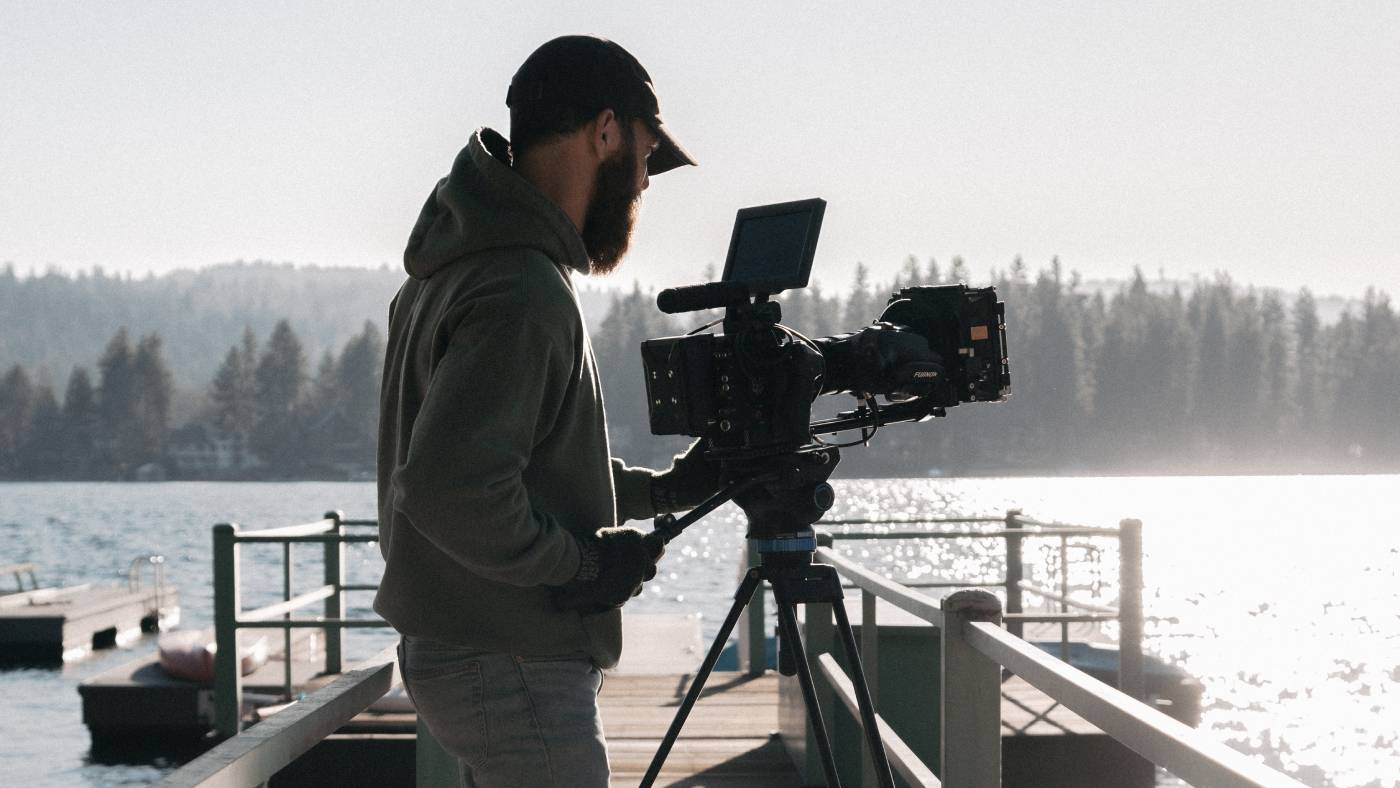Distance Converter
Welcome if you have found this blog. Are you a professional cameraman, are you just starting to become a cameraman, or do you want to become a cameraman? Right? No? Perhaps you can learn something new if you don’t fit into any of these three categories.
A cameraman’s work, especially in the television industry, can be included in many different types of productions, such as TV shows, TV movies, commercials, and newsletters. Some of these works use a variety of cameras and devices to record to a digital video file or videotape. Others frequently use film cameras, especially for commercials and television productions.
It would take a whole day to list all the professional cameraman jobs available. Both desirable and less desirable jobs are available. But the road to success begins with the acquisition of useful experiences and giving your best effort to achieve your goals. So how to be a cameraman? This article will provide you with the necessary information about this profession and information related to how to be a cameraman.
What Is A Cameraman?
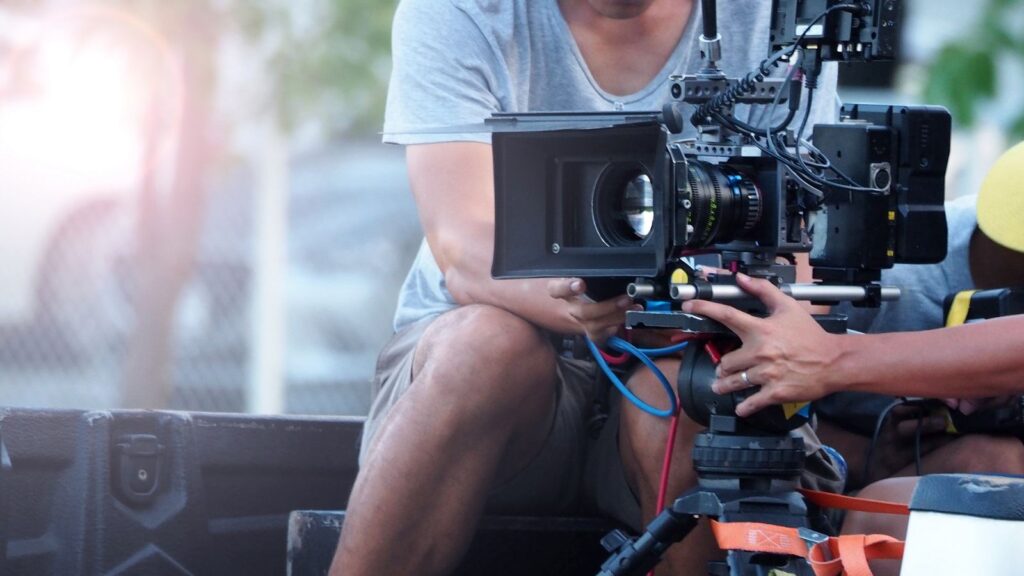
Before learning about how to be a cameraman we need to understand what this profession is. A videographer is a technical expert in capturing moving images for movies or television shows using a video or film camera. Broadcasts may contain news, programs, or advertisements. The duties you perform as a videographer can vary from job to job. Even if your camera isn’t working, you should always focus, center, and keep the news presenter or other object in the frame in a TV studio. Once a news team is on-site, videographers will document activities in the area, deliver opening remarks by reporters, and interview witnesses and bystanders.
You have more freedom in framing your photos, setting lighting parameters, and choosing lenses, filters, and movie stock while shooting TV shows, commercials or movies. You discuss shots and camera movements with the director and other members of the technical team. In addition, you will clean and lightly maintain your equipment.
Camera Equipment Overview
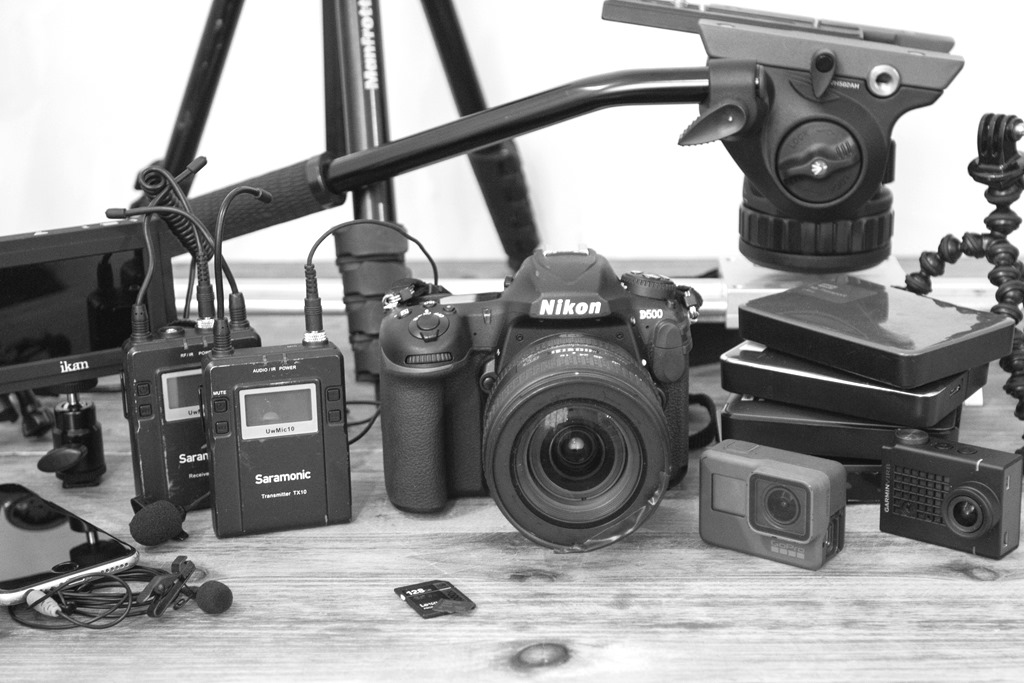
Camera
Abou this topic on how to be a cameraman, a good camera is similar to an expensive arm. It should be simple to operate, making it as simple as possible for you to capture the picture you want to take. So which camera should you buy?
For many photographers, an entry-level DSLR or mirrorless camera is the perfect place to start. DSLR cameras have built-in mirrors that reflect light straight from the lens into the optical viewfinder, allowing you to see exactly what the lens sees. Here’s how these two types of cameras differ. Because of the lack of this feature, mirrorless cameras can be more compact and lighter. With no lenses or other accessories, the market price of a brand-new DSLR or mirrorless camera typically ranges from $300 to $700.
The Canon Rebel series, the Nikon D3400, and the Nikon D5600 are some of the popular entry-level DSLRs. Don’t let the phrase “entry-level” fool you. We heartily endorse these amazing cameras for both amateur and professional photographers. You have even more alternatives in terms of mirrorless, including popular cameras from Canon, Nikon, Sony, Fuji, Olympus, and Panasonic.
If these cameras are out of your price range, you can save a lot of money by buying an older model from the same lineup, such as the Canon Rebel or Nikon D3200, or D5200. In addition, used goods are available. On the other hand, you can buy more sophisticated and specialized equipment at a higher cost. In either case, these are pretty capable cameras. Do some research, pick one, and don’t take any guesses because there are so many great options out there. (If you’re not sure where to start, though, check out our camera reviews.)
Lens
The other essential piece of photographic gear after the camera is the lens. Since the lens is what really focuses the light so that it can reach your camera sensor, lenses can sometimes be considered to be even more crucial than the camera itself.
You can change the lenses on some cameras, including all of the DSLRs and mirrorless cameras mentioned above. The term “interchangeable lens cameras” describes them. You can exchange a portrait lens for a big, expensive sports lens while still using the same camera. This is a significant advantage because it makes your system far more adaptable to various sorts of photography.
Which lens should you purchase? Many cameras come with kit lenses, which are used by some photographers. Others purchase their cameras and lenses independently. In either case, you will unquestionably need to buy a lens in the end. We suggest two (and possibly three) as a place to start. You should order the following in order of importance:
- A zooming kit lens, such as one with a focal length of 14–42 mm, 16–50 mm, 18–50 mm, 18–55 mm, or 18–105 mm. These versatile, low-cost lenses will give you a fair idea of what specialist lenses to purchase in the future. Additionally, they are of a higher grade than is sometimes given to them.
- A non-zooming prime lens such as a 25mm, 35mm, or 50mm f/1.8 is ideal for portraits and people shots with a “shallow focus” effect (blurry background; see our page on aperture).
- A zoom telephoto lens, such as 55-200mm. Even while not all photographers will initially require that functionality, this kind of lens enables you to capture distant objects like animals or sports.
Camera Brightness
Your focus subject can be made more visible or dark areas can be filled in using a camera light. Additionally important for filming interviews or documentaries are lights. Your films’ quality can be raised by using a light reflector. A videography studio lighting kit can be your best option if you intend to film the majority of your movies in one spot.
Tripod
An item of equipment called a tripod keeps your camera steady while you’re filming. In shooting static videos, it is helpful. It also enables a smoother transition when panning between various angles. Think about the following factors when selecting the best tripod:
Durability: You should select a sturdy tripod if your videography assignments require you to travel.
Flexibility: You should also take a tripod’s flexibility into account. You can adjust the position of your camera using a fluid head tripod. If you like to run and fire, you may even select a slider.
Fit: You need a tripod specifically designed to hold your video camera. There are tripods made for particular iPhone models, so you can use one even if you’re shooting with an iPhone.
Height: The majority of tripods have a height limit but can be extended for further height. Make sure the tripod you use has the appropriate height for your subjects.
Microphone
Although your camera probably has a built-in microphone, you can get better video audio by using a stand-alone microphone. When filming, using a microphone guarantees that all required sounds are recorded. Here are several microphone varieties to think about:
- Boomstick: Using a boom pole, you can record audio from many subjects. For larger groups or crowds, it is perfect.
- Bluetooth microphone: With a cordless microphone, your subjects’ audio will sound better. If you don’t have someone to hold a boom, this is a good alternative.
- Digital portable: An external microphone that you may also utilize to record extra noises is a portable digital audio recorder.
- Gun-mounted microphone: Using a shotgun microphone, you can pick out particular audio signals. It can be manually held or fastened to a boom pole.
- Portable microphone: un-and-gun video productions benefit from the use of handheld mics. When you are recording, they allow you more control over movement.
- Vest-worn microphones: Because you can fasten lapel mics to your subject’s shirt or collar, they are practical. You get clearer audio as a result.
Batteries
You can be better equipped to handle long film days by adding a few batteries to your videography gear. Always carry four extra batteries, at the very least. You might require even more if you’re shooting all day or over the course of the weekend. Because you can charge the batteries when they’re not in use, rechargeable batteries are always an excellent choice.
Memory Sticks
Additionally, having extra memory cards on hand is a good idea. Make sure they are empty and the proper size and kind for your camera. The ideal choice is compact flash memory cards because of their size and capacity to store a lot of video data. The amount of storage they provide is another thing to think about. There are numerous memory card sizes available, including 16GB, 32GB, and 64GB.
Camera Bag
To move your videography equipment between jobs, you need a sturdy camera bag. Stocking up on your videography supplies initially might help you determine how much storage you’ll need. You need a camera bag that is protective, durable, and weatherproof.
Disk Drive
If you’re going to be taking a lot of videos, an external hard drive will come in handy. It allows you to continue shooting while transferring videos from your camera. You can quickly move the footage from the portable hard drive to your desktop computer for editing once you’re done shooting for the day.
Video Editing Software
You need a competent video editing program once you’ve finished recording your videos. A reliable PC is also necessary for storing your data and films. There are several choices, and the best one for you will depend on the type of editing you will be doing.
Camera Settings
Regarding this entry in the how to be a cameraman topic, let’s start by going through some of the camera settings that can be applied to any modern digital camera. Since the following settings are essentially the same for all brands and types of cameras, you can explore them:
- Image quality: RAW
- Recording in RAW: Lossless compression (if available)
- White Harmonic: Auto
- Film simulation, image control, visual style, and creative style: standard
- Color Palette: sRGB
- Long exposure noise reduction: On
- ISO noise reduction: Off
- Lens Correction (Vignette Control, Chromatic Aberration Control, Distortion Control, etc.) and Active D-Lighting / DRO: Off
The most important camera settings are those listed above. Always start by choosing the right file format, which is RAW. You should always select Lossless Compression when choosing RAW compression, as it uses less space than the other options described here. For example, although Picture Control only affects how images appear on the camera’s LCD monitor when shooting in RAW, it’s best to use the standard profile and avoid adjusting any other settings. , such as sharpening, Contrast, Saturation, etc. because these factors matter only when shooting in the JPEG format.
The same is true for color space and white balance; you can adjust them after shooting RAW, so you don’t have to worry about them. Long exposure noise reduction doesn’t affect your RAW images on long exposures; it works by minimizing the amount of noise that you will notice in your photos. Unless you’re an expert, I recommend enabling this mode (though it will also double the time it takes to take a regular photo). You should also disable any in-camera lens correction, dynamic range enhancement, and other noise reduction settings as they have no positive impact on the quality of your RAW images.
It’s time to move on to the important photographic aspects once you have configured the aforementioned settings on your camera.
How To Shoot A Perfect Video

How To Be A Cameraman
Earn A Level
The first step of how to be a cameraman is that you must enroll in a bachelor’s program at an accredited college or institution. Most camera operators aspire to major in film production or cinematography to ensure they are trained in the skills and tools they need for their work in the field as the majority of the work is for professionals. Camera operator takes place in the film and television industry. However, you can also choose a similar major, such as photography or video production, which can cover many of the same topics. A bachelor’s degree can help kickstart your career as it will equip you with the fundamental knowledge needed to be a successful cinematographer.
Complete An Internship
To gain experience in this field, apply for an internship as a camera operator and this is also the second step of how to be a cameraman. Most executives do internships with film, television, or news production companies. This gives aspiring camera operators the opportunity to learn about their job responsibilities from experts in the field by watching them operate and helping with camera and equipment operation. . You can explore internship opportunities by researching online or contacting businesses you want to work for, however, some schools have placement programs that match students with opportunities. internships they may be interested in.
By educating you on industry protocol and giving you the opportunity to network with other professionals you may want to work with in the future, completing a camera operator internship can help you. willing to work in this field.
Apply For The Position Of Cinematographer
How to be a cameraman? The final step of how to be a cameraman is our guide. Looking for a job as a qualified camera operator. If you think you have a general understanding of the procedures and operations of the organization where you completed your internship, you might consider applying for positions there. However, you can also seek work as a camera operator with film or television production companies, news networks, events and sports, and more. Before looking for a particular career, it can be helpful to decide what industry you want to work in as it can affect where you look for job openings.
You can reach out to professionals you’ve met during your studies and internships who are familiar with your abilities and work ethic by networking during this step. This can improve your chances of landing a job, especially if any of the relationships are aware of any opportunities at their employer or other businesses they are familiar with.
Basics Of Cinematography
One of the key items in the topic of how to be a cameraman, the art of photographing and telling a visual story in a movie or TV show is called cinematography. Lighting, framing, composition, camera movement, camera angle, film selection, lens selection, depth of field, zoom, focus, color, exposure, and filtering are all considered. part of cinematography.
Choosing A Camera
Top 5 Considerations When Choosing a New Camera on how to be a cameraman.
Image quality is superior to your camera phone
You can make this choice after reading camera reviews. If your camera doesn’t take better pictures than your phone, or at least provides the functionality your phone doesn’t, it’s no use carrying it around.
Adjust ergonomics for your hands
You’ll have to make an informed choice based on the reviews you’ve read if you can’t handle the camera in your local camera store. How big is it? Did it have a strong grip? Are the required nodes spaced enough?
The right size for your habits
This is a crucial one. Are you a parent who is constantly accompanied by a child? If so, your camera should ideally be portable and/or lightweight. Do you frequently travel with a bag? You might get away with something more substantial. You often travel, right? And etc.
There are lenses available that fit your demands now and in the future.
There is no need to take this into consideration if you select a compact camera with a fixed lens. Look at the alternative lenses available if you choose an interchangeable lens camera. Are they within your budget? Do you need specific focal lengths? Are used lenses accessible?
The newest model that fits your price range
Since camera technology is advancing so quickly, I always advise purchasing the most recent models. There are frequent deals can be obtained with an earlier model if your budget can’t support the very latest, but try to stay away from anything older than this. Additionally, there is the choice of used items. But buyer beware!
You might find our article on how to buy and sell old camera gear helpful. Also bear in mind that although you can get cameras for around $300, I suggest spending a little extra to make sure it can take pictures that are superior to those from your smartphone.
Settings For Shooting Video
Reduce shutter speed
About this topic of how to be a cameraman, shooting videos in low light is much easier by reducing the shutter speed. The shutter speed needs to be set according to the focal length of the lens. For example, if you’re shooting at 50mm, the shutter speed should be approximately 1/50th of a second and no higher. However, the shutter speed needs to be adjusted high if the subject you are trying to focus on is moving.
No matter what you’re shooting, whether it’s a moving subject or a stationary one, make sure the shutter speed doesn’t drop below 1/125 of a second. For 24 FPS and 30 FPS, the shutter speed should be 1/50 second and 1/60 second, respectively. When using a camera or handheld camcorder, it can sometimes be difficult to take pictures with fast shutter speeds. Use a tripod to set your camera to shoot at as much slower a shutter speed as you like.
Enhance ISO
This is an important consideration while recording any movie scene or when taking pictures. ISO is nothing more than your camera’s ability to handle light. Higher ISO values indicate higher sensitivity, while lower ISO values indicate reduced light sensitivity. It is recommended to use a higher ISO when recording videos to make the subject brighter and clearer even in low light.
Using LEDs
Using additional lights on the camera when you’re filming is another great way to shoot in low light. Shooting movies in low light can sometimes be a challenge because your camera settings don’t always allow for the subject to receive enough light. You can do this by placing your subject in an area with more light. However, if that’s not possible, a second LED would be a great backup solution.
Use wider aperture
You can alter the aperture on the camera to suit the size or area of the topic. I advise you to set the f-stop on your filming camera to the lowest possible value, about 1.4. Lowering the f-stop widens the camera’s aperture, which lets in more light and allows you to take brighter pictures even in low light.
Frame rate adjustments
Your video’s frame rate affects its quality and watching experience. The quality of the movie improves with a greater frame rate. As a result, it is crucial to consider when photographing in low light. Some cameras have a set frame rate, such as 30 frames per second for many and 24 frames per second for others.
Reduce lux
The capacity of a camcorder in low light is gauged by its Lux rating. The better the low-light shooting conditions are, the lower the Lux rating. To be more exact, it won’t perform well in low-light conditions if the Lux is set to 0.12. However, if you set it to 0.5, it will be more tolerant to low-light conditions.
Tips For Shooting Video
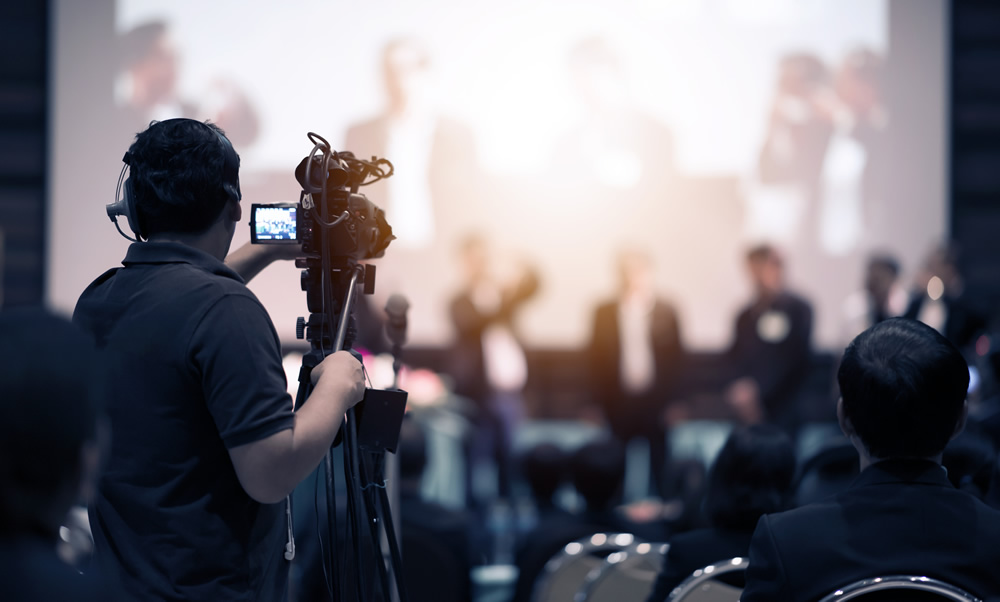
Be ready
Outline your concept on paper before you even turn on the camera. Consider the following inquiries for yourself: What does this video want to accomplish? Who is your target market? Where do you want to shoot? Who should you speak with? An excellent idea is to start by conducting interviews. You can then get cutaway views that match the interviewee’s descriptions in this manner.
The race is won by steadiness and speed
By avoiding needless quick, jerky shots and zooms, you can give your video a professional edge. Use a tripod, or just brace your elbow with the hand that isn’t used for shooting. like as (demonstrate).
The set was quite
During interviews, try to keep background noise to a minimum. We are aware that isn’t always feasible. If the noise is unavoidable, show the noise’s source in the image’s backdrop. Your audience will be considerably more sympathetic to the interruption.
Laugh it off
Try to limit your exposure to scenes with stark contrast. To prevent distracting shadows, place your subjects in even lighting. Additionally, stay away from backgrounds that are overly light or dark, such as shooting a subject in front of a window. See the effect that even the lighting produces.
Everything in framing
Use wide views to establish your location before switching to close-ups to offer your audience a more personal sense of the scene and action. Use close-up shots when conducting interviews, but make sure your subject doesn’t take up the entire frame. Viewers will be able to understand the background thanks to this.
Advanced Camera Tips
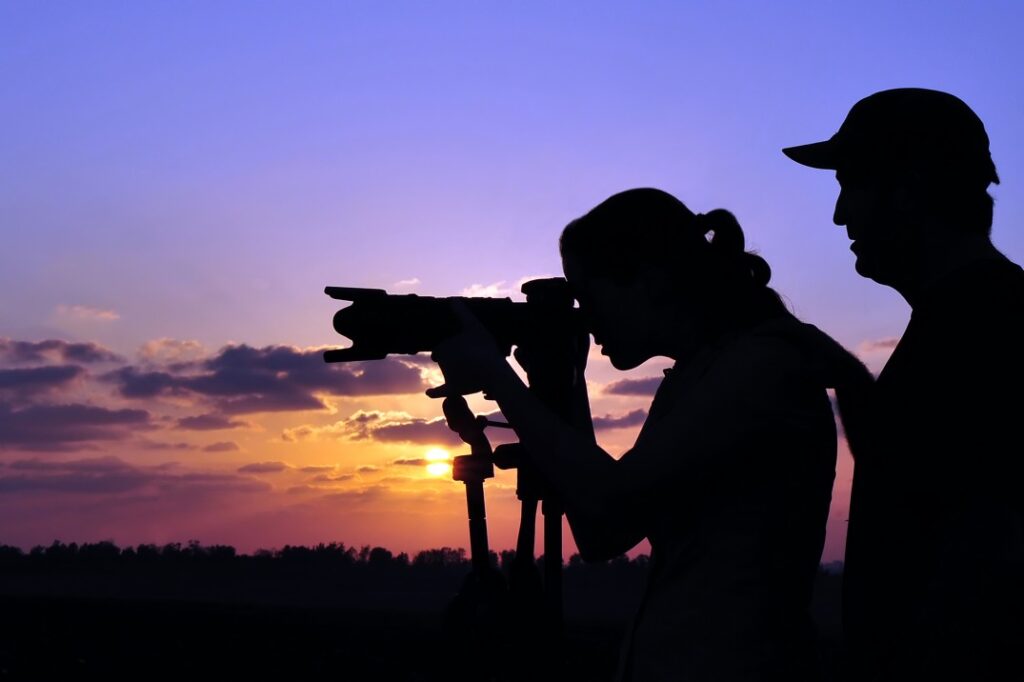
About how to be a cameraman, we ưill discover some advanced about this career
DSLR Cameras
They work well in low light conditions and don’t suffer from camera shake issues that seem to be a concern with point-and-shoot models, making them excellent for night photography. Additionally, DSLR cameras’ larger image sensors tend to absorb more light during low-light conditions than point-and-shoot cameras do, producing higher-quality images.
Access a Tripod
If at all possible, utilize a tripod with your DSLR camera when taking nighttime photos to further reduce the likelihood of camera shake. Additionally, you may be able to manually set the ISO a few levels lower while using a tripod as opposed to hand-holding the camera. Noise in the images can be reduced by using a low ISO setting.
Instead of holding the camera in your hands when shooting without a tripod, think about using a wall or table where the camera may be stabilized.
Change ISO settings
You may need to manually increase the ISO level if you must hold the camera while taking a photo. The camera’s auto setting may set the ISO too low depending on the available light for your night shots. To ensure quality photos, experiment with different ISO settings. But keep in mind that your final image will be of poorer quality the higher the ISO level. Even if a lot of light hits the image sensor in nighttime images taken with a DSLR camera set to high ISO, the higher the ISO you raise, the more grainy and noisy the image becomes.
Choose an Apeed Shutter
Once ISO has been selected, you should try to choose the slowest shutter speed possible. Your night shots will have a better chance of success if the shutter is left open for a longer time. However, due to camera shake, a slower shutter speed may result in blurred photos. Again, some testing may be required.
Pull Up the Shutter
To prioritize shutter speed, use the S setting on your DSLR. When first attempting night photography with a DSLR, a typical mistake is not leaving the shutter open long enough.
Leaving the shutter open for 10 to 30 seconds is not unusual, especially when photographing city lights at night, as is the case in the photo above. A tripod is required to take such pictures, and some experienced photographers insist on using a wired or wireless remote control shutter, which makes it easier to keep the shutter open for long periods of time. easier without risking hitting the camera.
Final Thoughts On Camera Work
On how to be a cameraman, practice your video shooting techniques and get input from other directors, videographers, and film and television industry colleagues if you want to be one. skilled cinematographer. To push yourself to adopt new shooting techniques and styles, be open to criticism and seek out novel approaches. Learn how cameras and other equipment, such as lighting and sound systems, work. To ensure that everyone’s efforts lead to a well-done, visually appealing final product when working with a team, you must listen carefully and give clear instructions.
